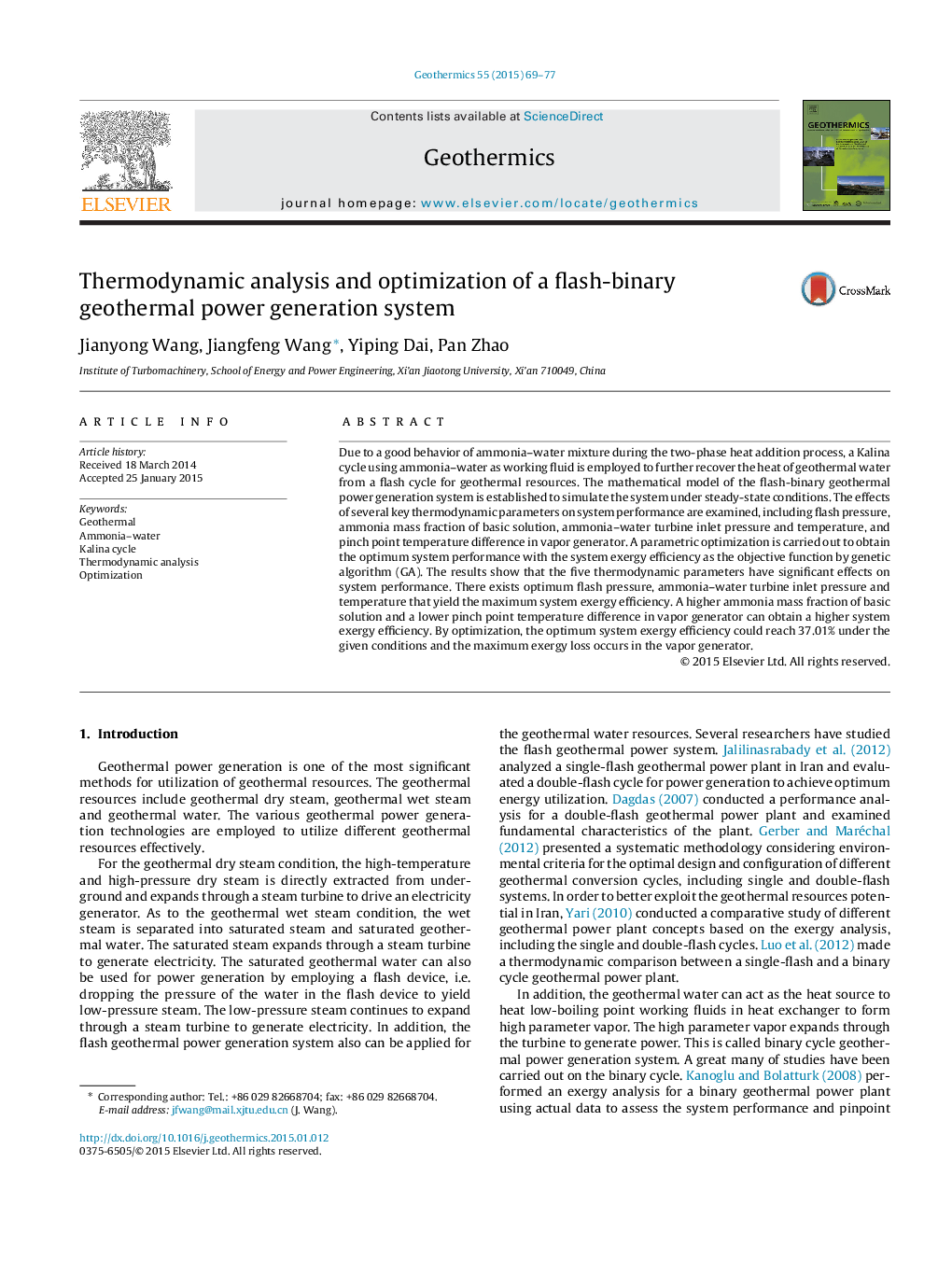| Article ID | Journal | Published Year | Pages | File Type |
|---|---|---|---|---|
| 8088967 | Geothermics | 2015 | 9 Pages |
Abstract
Due to a good behavior of ammonia-water mixture during the two-phase heat addition process, a Kalina cycle using ammonia-water as working fluid is employed to further recover the heat of geothermal water from a flash cycle for geothermal resources. The mathematical model of the flash-binary geothermal power generation system is established to simulate the system under steady-state conditions. The effects of several key thermodynamic parameters on system performance are examined, including flash pressure, ammonia mass fraction of basic solution, ammonia-water turbine inlet pressure and temperature, and pinch point temperature difference in vapor generator. A parametric optimization is carried out to obtain the optimum system performance with the system exergy efficiency as the objective function by genetic algorithm (GA). The results show that the five thermodynamic parameters have significant effects on system performance. There exists optimum flash pressure, ammonia-water turbine inlet pressure and temperature that yield the maximum system exergy efficiency. A higher ammonia mass fraction of basic solution and a lower pinch point temperature difference in vapor generator can obtain a higher system exergy efficiency. By optimization, the optimum system exergy efficiency could reach 37.01% under the given conditions and the maximum exergy loss occurs in the vapor generator.
Related Topics
Physical Sciences and Engineering
Earth and Planetary Sciences
Geochemistry and Petrology
Authors
Jianyong Wang, Jiangfeng Wang, Yiping Dai, Pan Zhao,
